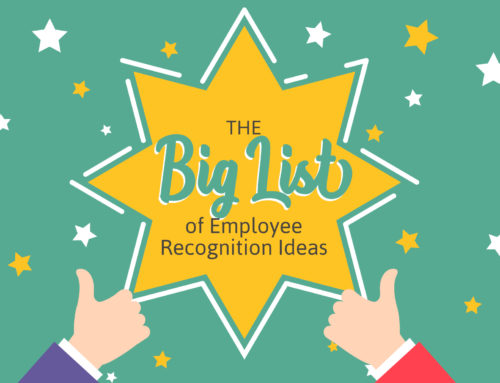Every company has an elevator speech. A few choice words that condense all your hard work into something that will hopefully pique someone’s interest. In a lot of ways, it’s ground zero for corporate culture.
Try to describe your company in 140 characters or less.
What do you talk about? Your products. Your services. Your customers. Your people. Your philosophy. Boom boom boom boom boom. A stranger now knows enough to know if he’s interested.
Why don’t companies speak this concisely to their employees?
The answer’s somewhat obvious. Most companies have to get out tons of internal communications to their employees, including messages on policy, ethics, training, benefits, and so forth. One large organization once handed us a massive binder overflowing with every type of employee communication imaginable with a simple plea: this is all the stuff we really need to send to our people—please help.
Companies need to send out all this stuff. And yes, employees need access to this information in order to be on board and on brand with your message.
To keep their workforces engaged, corporate cultures have a huge challenge in front of them. As attention spans get shorter, and the rest of the world responds by communicating 140 characters at a time, how do you send out all this stuff to your employees without being ignored?
Whether you’re doing printed, online, or even verbal day-to-day communications with your team, here’s a few things to keep in mind for trying to engage and keep your employees’ attention in today’s accelerated culture:
Keep it simple. When communicating with your team, think in soundbites: important information first. What do you want them to do? No matter how interesting you may think you are, your employees’ or coworkers’ attention spans may beg to differ. Give ‘em the good stuff before they have time to check out.
Break the details down into easily digestible chunks. Make your information look easy to get through. Your audience will thank you for it.
Being fast is great. Being clear is better. The 140-character-at-a-time mentality has made it so easy to fire off data in every direction that piecemeal communications are becoming a norm. You may have saved yourself three minutes, but you may have also cost your audience 15 in having to go back and piece together the meaning. Consolidate up front as much as possible.
Looks matter. The design helps reinforce your brand and engage employees to keep them interested in your message. Try not to underestimate its importance.
Let your brand do some of the heavy lifting. Most big brands have values to reinforce, templates to work with, and messaging guidelines to help you stay on point. The templates can come in really handy by providing cohesion for lots of disparate communications. If done right, the unifying design characteristics can actually make it look and feel like employees are getting less stuff.
Make life easier for your audience. Can you add an event link to give them more information? If your communications make life simpler, they’ll welcome reading them.
Today’s reality has sped up life and business to an almost blinding pace. Every interaction seems to be getting shorter and shorter. Face-to-faces became phone calls. Phone calls were shortened into emails. Emails into texts. Texts to emoticons.
As communication speeds up, take a few minutes to reflect. You’re communicating all the time to your employees. But are they listening?





